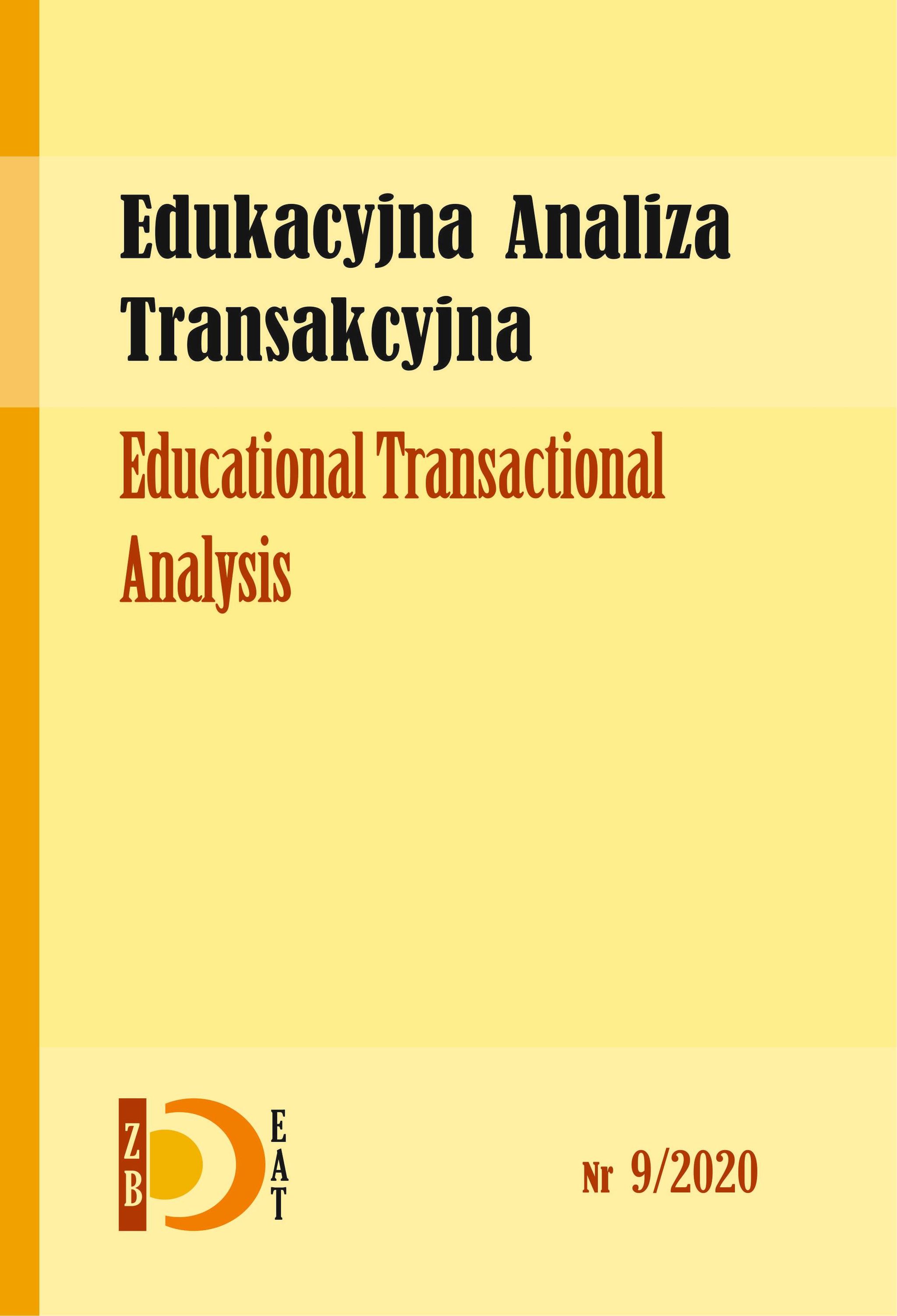Building relationships at school by responding to the individual needs of students and teachers using the Process Communication Model®
- Authors
-
-
- Keywords:
- Education, Process Communication Model, communication, psychological needs, relationship
- Abstract
-
The purpose of this article is to present the basic concepts and practical application of the Process Communication Model® in the field of education. PCM® is a psychological personality model developed by the American clinical psychologist Dr. Taibi Kahler (Pauley, J., Bradley, D., Pauley J., 2002, p. xxiii). The model shows how to communicate effectively taking into account different personality types by using communication channels and gives the key to recognizing psychological needs and the resulting individual motivations specific to the base type of personality and phase, i.e. the currently dominant personality type (Kahler, 2008, pp. 45-81, 111–116). Also practical conclusions from the application of the model in the field of education in schools in the USA are presented (Donlan, 2003, pp. 48-49).
- Downloads
-
Download data is not yet available.
- Author Biography
- References
-
Akademia Przyszłości (2020), „Raport o dołowaniu” https://akademiaprzyszlosci.org.pl/raport-o-dolowaniu/ (data pobrania 13.11.2020)
Collignon, G. (2017). The Art of adaptive communication. Hot Springs: Kahler Communications, Inc.
Collignon, G., Legrand, P., Parr, J. (2010). Parlez-vous Personality? Process Communication for Coaches. Paris: Kahler Communication Europe.
Donlan, R. Ed.D., (2013) PCM Journal, 1, 45-67, The Process Education Model (PEM): A Catalyst for School Improvement
Gilbert, M. (2018) Student performance is linked to connecting effectively with teachers. Journal of Research in Innovative Teaching & Learning
Juul J. (2013) Kryzys szkoły. Co możemy zrobić dla uczniów, nauczycieli i rodziców?, Wydawnictwo Mind, Podkowa Leśna
Kahler, T., Capers, H. (1974). The Miniscript. Transactional Analysis Journal, 4 (1), 26–42, https://doi.org/10.1177/036215377400400110.
Kahler, T. (1975). Drivers: The Key to the Process of Scripts. Transactional Analysis Journal, 5 (3), 280–284, https://doi.org/10.1177/036215377500500318.
Kahler, T. (2008). The Process Therapy Model. Little Rock: Taibi Kahler Associates, Inc.
Lefeuvre, J. (2007). Discover Process Communication. Dunod, Paris: Kahler Communication Europe. Ware, P. (1983). Personality Adaptations (Doors to Therapy). Transactional Analysis Journal, 13 (1), 11–19, https://doi.org/10.1177/036215378301300104.
Muse School reportaż https://www.youtube.com/watch?v=bMg2suPUxIE (pobrano 13.11.2020)
Pauley, J., Bradley, D., Pauley J., (2002). Here’s how to reach me. Matching Instruction to Personality Types in Your Classroom, Baltimore: Paul H. Brookes Publishing Co.
- Downloads
- Published
- 2020-12-30
- Issue
- No. 9 (2020)
- Section
- Transactional analysis in education
- License
-
Copyright (c) 2020 Anna Hady

This work is licensed under a Creative Commons Attribution 4.0 International License.
AUTHOR'S STATEMENT
I am aware that the Educational Transactional Analysis journal is published under a Creative Commons license - Attribution (https://creativecommons.org/licenses/by/4.0/legalcode).
By submitting the article, I agree to make it available under this license
How to Cite
Similar Articles
- Zbigniew Wieczorek, Personality Traits in the Context of Transactional Analysis and Emotional Intelligence in Young Adults: A Research Report , The Educational Transactional Analysis: No. 13 (2024)
- Ewa Wilczewska, Feedback as an educational tool to meet needs and an area of exchange of recognition signs , The Educational Transactional Analysis: No. 9 (2020)
- Zbigniew Wieczorek, Symptoms of anxiety and depression in social media in connection with the threat of COVID-19 , The Educational Transactional Analysis: No. 9 (2020)
- Zbigniew Wieczorek, dr, Language of Change in Transactional Analysis , The Educational Transactional Analysis: No. 6 (2017)
- Agnieszka Woś-Szymanowska, mgr, Process Communication Model – an effective tool supporting education , The Educational Transactional Analysis: No. 7 (2018)
- Justyna Józefowicz, Effective school in a crisis COVID-19 , The Educational Transactional Analysis: No. 10 (2021)
- Paulina Ratajczak, Motivation and motivating in the educational process in the light of transactional analysis theory , The Educational Transactional Analysis: No. 11 (2022)
- Piotr Toczyski, The Potential of Educational Transactional Analysis for Human Rights Education , The Educational Transactional Analysis: No. 13 (2024)
- Zbigniew Wieczorek, Depression in the light of the Transactional Analysis theory – social media Big Data analysis , The Educational Transactional Analysis: No. 8 (2019)
- Małgorzata Minchberg, mgr, Education through art: an artist at school , The Educational Transactional Analysis: No. 7 (2018)
You may also start an advanced similarity search for this article.


